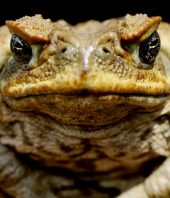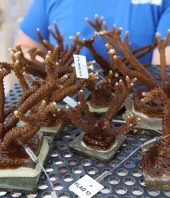Something is affecting the walking ability of some Florida panthers and bobcats, and state scientists want the public’s help documenting the mystery disorder.
The ailment is reportedly impacting the cats’ ability to coordinate their back legs, according to a Florida Fish and Wildlife Conservation Commission press release.
This month, FWC has confirmed neurological damage in one panther and one bobcat, but trail camera footage shows eight panthers, mostly kittens, and one adult bobcat displaying varying degrees of the condition.
“While the number of animals exhibiting these symptoms is relatively few, we are increasing monitoring efforts to determine the full scope of the issue,” Gil McRae, director of FWC’s Fish and Wildlife Research Institute, said in a statement.
The trail camera footage was shot in Collier, Lee and Sarasota counties, and one affected panther was photographed in Charlotte County, according to the release.
McRae said FWC is testing for different potential toxins, including rat poison, and also infectious diseases and nutritional deficiencies.
“Numerous diseases and potential causes have been ruled out; a definitive cause has not yet been determined,” he said. “We are working with the U.S. Fish and Wildlife Service and a wide array of experts from around the world to determine what is causing this condition.”
The agency is asking the public for any private trail video footage that happens to capture cats displaying symptoms of the condition.
Panthers are endangered and native to Florida.
Amber Crooks, environmental policy coordinator for the Conservancy of South Florida, a nonprofit that opposed a massive proposed development project in Collier County that some conservationists argue would destroy the shrinking panther habitat, said she has not heard of any more theories as to what is causing the condition, but she is closely following the issue.
“The population is already facing many other threats, so this is concerning, particularly given that there are only 120 to 230 panthers left,” Crooks said in an email Monday, citing urban development, cars and territorial disputes due to loss of habitat as other factors threatening the big cats.
Although the panther population is small in Florida, conservation efforts that began in the 1970s and ‘80s, including the federal Endangered Species Act, helped bring them back from the brink of extinction when there were an estimated 20 to 30 panthers left in the state, according to the U.S. Fish and Wildlife Service.
In the 1990s, wildlife experts brought several Texas cougars, a subspecies closely linked to the panther, to Florida to mate with the panthers to diversify their gene pool and boost their numbers. At the time, inbreeding had led the panthers to contract a multitude of medical issues, from heart murmurs to sterility.
With this current neurological issue, the FWC says those with videos of panthers displaying symptoms of the walking ailment can upload files less than 10 MB at MyFWC.com/PantherSightings. Larger files can be sent to Panthers.Sightings@MyFWC.com.
Source: Miami Herald, Full Article






